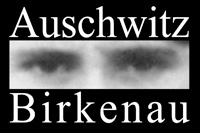




Auschwitz II-Birkenau
Planned at first as a camp for Soviet prisoners of war, it ended up becoming a concentration camp for prisoners of various ethnic backgrounds and a center for extermination – the biggest mass extermination facilities in the occupied Europe were created there – gas chambers – where the Nazis murdered the majority of 1.1 million Jews deported to Auschwitz.
Construction of the camp began in October 1941 near the expelled Polish village of Brzezinka (German: Birkenau) and three kilometers from the Auschwitz I camp, existing already for over a year.
The camp reached the peak of its population in the summer of 1944 with nearly 90,000 prisoners (women and men and a small group of children): 68,000 Jews, 13,000 Poles, 8,000 prisoners of other ethnicities.
From early 1942, within the total extermination of Jews in Europe realized by the Third Reich authorities, mass extermination facilities began their operation near the camp under construction. Initially these were two provisional gas chambers, launched after converting the houses of Poles expelled from the village of Brzezinka. In late 1942, the Germans began the construction of a complex of four big gas chambers and crematoria, which went into operation in 1943.
Birkenau expansion plans
Initially, the camp was planned to hold 100,000 prisoners. In 1942, the intentions changed and the number of prisoners to be housed in Birkenau reached 200,000. The camp was to be divided into four parts called construction segments: the first for 20,000 prisoners and three other segments for 60,000 prisoners each. Planned surface of the entire camp was 175 hectares.
These intentions were only partially realized. Three of the four planned construction segments were completed and in total – by the spring of 1944, when construction works were definitively suspended – on the surface of 140 hectares, the total of over 300 wooden barracks as well as administrative and infrastructure buildings were constructed, together with 16 km of live barbed-wire fencing, a few dozen kilometers of roads and a 13-kilometer long system of drainage ditches. In addition, in May 1944, a three-rail siding went into operation together with the unloading ramp.
